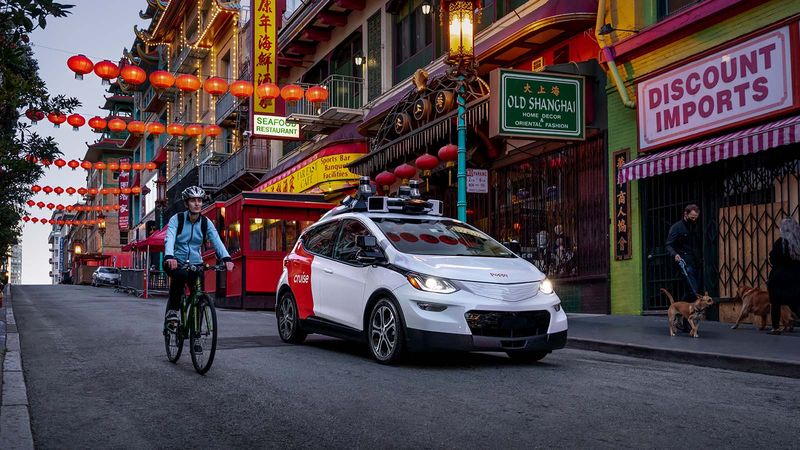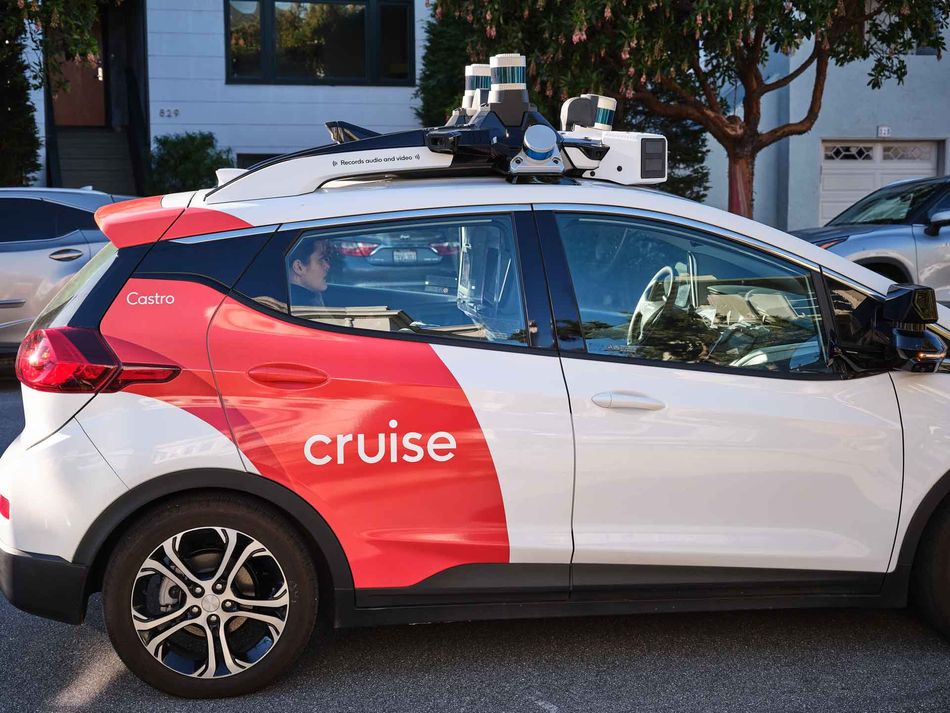Are robotaxis ready for prime time?
Cruise and Waymo have proven fully-automated ride-hail technology can work in certain conditions, but the services remain more a novelty than a competitive alternative.

Cruise robotaxi on the job in San Francisco. (Cruise)
This article was first published on
www.sae.orgFREE REPORT:
Reducing Human Driver Error and Setting Realistic Expectations with Advanced Driver Assistance Systems
Thousands die or are injured each year in automobile crashes. Bringing automated driving systems technologies into the advanced driver assist systems (ADAS) and connected vehicle space will help humans drive more safely and better prepare us for automated vehicles (AVs).
Learn more about ADAS and ADS implementation with the goal of reaching zero deaths and serious injuries by downloading this FREE report from SAE International (valued at $50).

Robot taxis slow to roll out
The driverless ride-hail services currently in operation, Waymo and GM-owned Cruise, lately have been in the news, and not usually for positive reasons. So seems an appropriate time to offer an overview of the only two commercial robotaxi operations available for public use, as well as my firsthand experience with their efforts.
Despite repeated annual promises from Elon Musk that Tesla owners would be able to send out their vehicles to earn money as robotaxis, the leading EV manufacturer is not much closer to delivering this capability than it was in 2016. Instead, as of September, 2023, we currently have only Waymo and Cruise offering fully driverless ride-hailing services on public roads.
Waymo has offered paid driverless rides to members of the public in Chandler, AZ since October 2020 and has since expanded to virtually the entire Phoenix metropolitan area. This summer, the California Public Utilities Commission granted permits to Waymo and General Motors-owned Cruise to launch 24/7 fared operations throughout the city of San Francisco. Waymo started its service there in mid-August.
Cruise launched its paid service that covers about one-third of San Francisco during nighttime hours in June 2022. Last December, Cruise expanded into the Phoenix suburbs and Austin, Texas. Readers probably have heard about the Cruise’s challenges in San Francisco: groups of its vehicles stuck on the same block, confused robotaxis obstructing traffic, delaying emergency services and driving into wet concrete. This has led to Cruise cutting the San Francisco fleet of 200-plus vehicles in half while the company addresses the problems.
Is the novelty worth the wait?
In Austin, which I visited in June and September 2023, Cruise operates a much smaller fleet, as it is expanding test operations to 10 U.S. cities. It is holding off on building more Chevy Bolt-based robotaxis while it waits on National Highway Traffic Admin. (NHTSA) approval for the company’s purpose-built Origin. Rides are available on any given night between 8 p.m. and 5:30 a.m. During this time, there are around 8 or 10 driverless Bolts roaming the city north of the Colorado River waiting for passengers.
Hailing a ride is very much like requesting an Uber or Lyft. You enter your destination in Cruise’s smartphone app and in a minute or two, it will tell you when the robotaxi is expected to arrive. That’s where the problem starts. The small fleet means you may be waiting considerably longer for a pickup than you would a conventional ride-hail. For the first ride on my most recent trip, arrival took nearly 25 minutes, a problem exacerbated by extremely convoluted routing. At one point I observed exactly what added five minutes to my wait time: I could see the car a block away and watched it turn to loop another six blocks instead of driving straight toward me.
Once onboard, the routes were equally complex for no discernible reason. Returning from the University of Texas campus to my hotel, Google Maps came up with a route with an estimated drive time of seven minutes. The Cruise route had many seemingly unnecessary turns that took the car further from the destination before turning in the right direction. It ultimately took about 27 minutes to arrive despite no traffic. While having automated vehicles use maneuvers such as three right turns to avoid an “unprotected” left turn is reasonable from a safety-optimization standpoint, turning off a major one-way thoroughfare with no traffic to instead loop through a neighborhood seemingly adds risk.
The Cruise vehicles I rode in never did anything particularly unsafe, although the path planning did result in some unusually wide turns. At one point, we passed another Cruise vehicle stalled in the middle of the road with its hazard lights flashing. Since my previous ride in June, Cruise has expanded the pickup and drop-off locations in Austin, so I didn’t have to walk six blocks to get a ride. At this point, however, the inconvenience of long waits and extended rides means I wouldn’t recommend the service for anything more than a novelty for someone who wants to experience one possible version of our new mobility future.
This article was written by Sam Abuelsamid.
